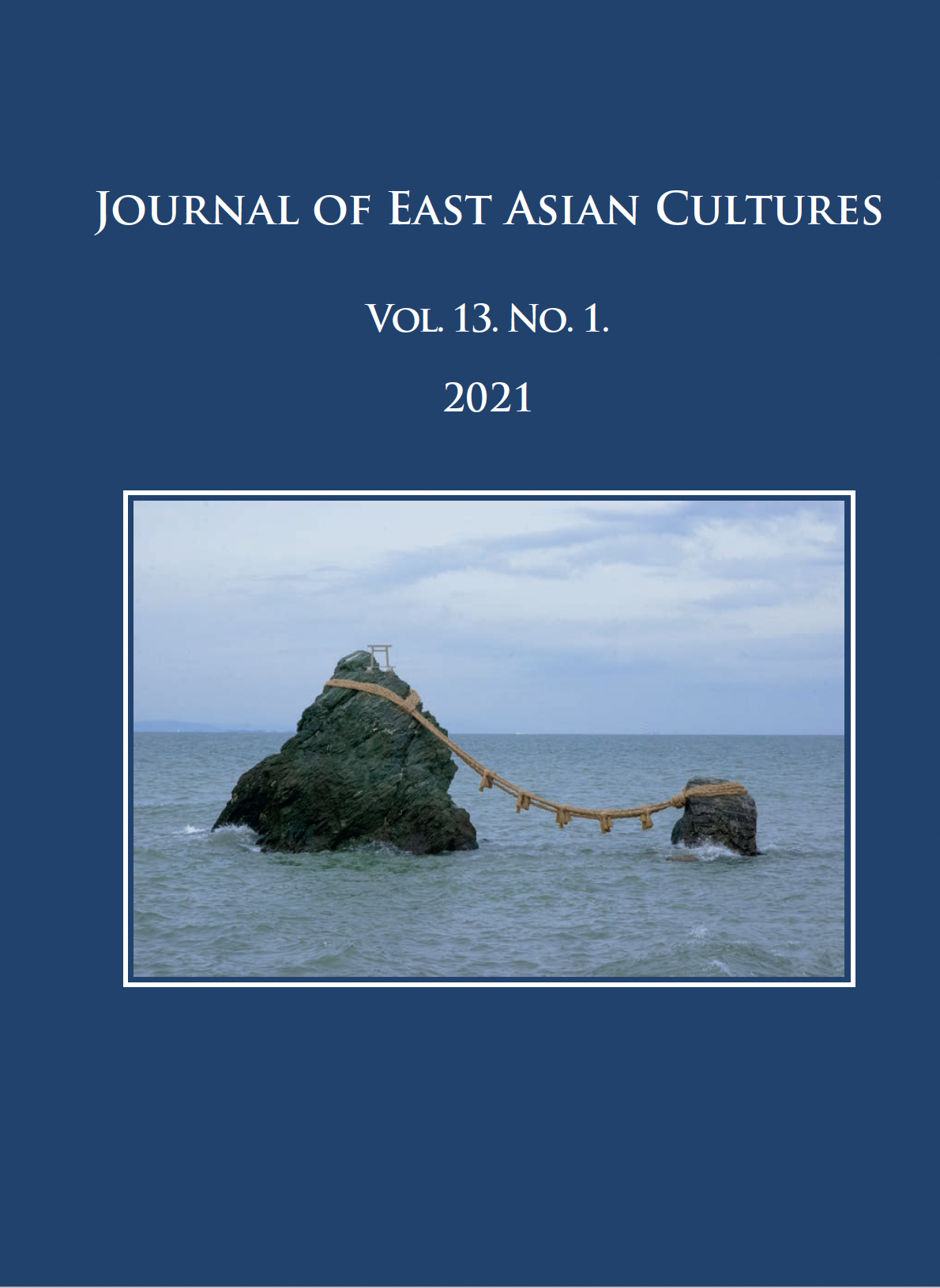The Role of Family in the Construction of Traditions among Second-Generation Chinese Immigrants in Hungary
Published 2021-12-15
Keywords
- second generation Chinese immigrants,
- multicultural identity,
- family,
- tradition
How to Cite
Copyright (c) 2021 the author(s)

This work is licensed under a Creative Commons Attribution-NonCommercial 4.0 International License.
Abstract
Previous research conducted in Hungary has shown that second generation Chinese immigrants construct a complex, multicultural identity which contains elements from the cultural environment created by the host society, the migrant diaspora, the family of the migrant and the country of origin as well. This paper presents the findings of an interview-based research project conducted in Hungary with the involvement of 20 second-generation Chinese immigrants and seeks to examine the complexity of their cultural identity, focussing especially the role of the family in the construction of traditions. According to our findings we argue that in the family setting, there is constant negotiation between generations regarding norms and traditions, which reveal different priorities. In this article I show that those areas where the most negotiations occur also overlap with the fields of increased parental interest and control, namely: education, dating/marriage, and language. I also discuss how holidays celebrated by the family show a high degree of flexibility and mixed solutions, involving cultural elements from both the host society and the country of origin.
References
- Asher, Curt 2011. “The progressive past: How History Can Help Us Serve Generation 1.5.” Reference & User Services Quarterly 51.1: 43–48. https://doi.org/10.5860/rusq.51n1.43
- Borsfay Krisztina – Nguyen Luu Lan Anh 2018. “Megküzdés a migránslét kihívásaival. Magyarországi kínai gyerekek akkulturációs tapasztalatainak feltérképezése” [Coping with the challenges of being a migrant. Exploring acculturation experiences of Chinese children living in Hungary]. Alkalmazott Pszichológia 2018.4: 7–33.
- Esser, Hartmut 2006. “Migration, Language and Integration.” AKI Research Review 4.
- European Commission n. d. “Migration and Home Affaires.” 13.04.2020. URL: https://ec.europa.eu/home-affairs/what-we-do/networks/european_migration_network/glossary_search/second-generation-migrant_en
- Foner, Nancy 1997. “The Immigrant Family: Cultural Legacies and Cultural Changes.” The International Migration Review 31.4: 961–974. https://doi.org/10.1177/019791839703100407
- Foner, Nancy – Dreby, Joanna 2011. “Relations Between the Generations in Immigrant Families.” Annual Review of Sociology 2011.37: 545–567. https://doi.org/10.1146/annurev-soc-081309-150030
- Fukuyama, Francis 1996. Trust: The Social Virtues and the Creation of Prosperity. New York: Free Press.
- Gelmana, Susan A. – Roberts, Steven O. 2017. “How language shapes the cultural inheritance of categories.” PNAS 114.30: 7900–7907. https://doi.org/10.1073/pnas.1621073114
- Graburn, Nelson H. H. 2001. “What is Tradition?” Museum Anthropology 24.2/3: 6–11. https://doi.org/10.1525/mua.2000.24.2-3.6
- Guo Xiaojing 2010. “Beilleszkedtek-e a Magyarországi Kínaiak?” Távol-keleti Tanulmányok 2010.1: 123¬–133.
- Huang, Grace Hui-Chen – Gove, Mary 2012. “Confucianism and Chinese Families: Values and Practices in Education.” International Journal of Humanities and Social Science 2.3: 10–14.
- Kibria, Nazli 1993. Family Tightrope: The Changing Lives of Vietnamese Americans. Princeton University Press.
- Lieber, Eli et al. 2004. “Filial Piety, Modernization, and the Challenges of Raising Children for Chinese Immigrants: Quantitative and Qualitative Evidence.” Ethos 32.3: 324–347. https://doi.org/10.1525/eth.2004.32.3.324
- Nesteruk, Olena 2010. “Heritage language maintenance and loss among the children of Eastern European immigrants in the USA.” Journal of Multilingual and Multicultural Development 31.3: 271–286. https://doi.org/10.1080/01434630903582722
- Nyíri Pál 2003. “Új kisebbség Magyarországon: a kínaiak” [New minority in Hungary: the Chinese]. Barátság 10.2: 3865–¬3871.
- Oring, Elliot 2013. “Thinking through Tradition.” In: Blank, Trevor J. – Howard, Robert G. (eds.) Tradition in the 21st century: Locating the role of the past in the present. Boulder, Colorado: University Press of Colorado, 22¬–48. https://doi.org/10.7330/9780874218992.c01
- Putnam, Robert 1993. “The Prosperous Community: Social Capital and Public Life.” The American Prospect 1993.13: 35–42.
- Sebestyén Nóra – Fülöp Márta 2014. “A versengés, győzelem és vesztés szubjektív jelentése magyar, kínai és Magyarországon tanuló kínai diákok körében” [Subjective meanings of competition, winning and losing among Hungarian, Chinese and Chinese immigrant students living in Hungary]. Magyar Pszichológiai Szemle 70.1/9: 143–158. https://doi.org/10.1556/0016.2015.70.1.9
- Suárez-Orozco, Carola – Suárez-Orozco, Marcelo M. 2015. “Structuring Opportunity for Immigration Origin Children.” In: Antonio M. Battro – Ingo Potrykus – Marcelo Sánchez Sorondo (eds.) Bread and Brain, Education and Poverty. Proceedings of the Working Group, 4-6 November 2013. [Scripta Varia 125.] Vatican City: Libreria Editrice Vaticana, 127–164.
- Várhalmi, Zoltán 2010a. “A budapesti kínai és vietnámi gazdasági klaszterek néhány jellegzetessége” [Some Characteristics of Chinese and Vietnamese Economic Clusters]. In: Hárs Ágnes – Tóth Judit (eds.) Változó migráció – változó környezet [Changing Migration – Changing Context]. Budapest: MTA Etnikai-nemzeti Kisebbségkutató Intézete, 173–189.
- Várhalmi, Zoltán 2010b (2011). “Magyarországi migánsok kapcsolathálójának típusai, jellegzetességei” [Types and characteristics of the migrant networks in Hungary]. In: Örkény Antal – Székelyi Mária (eds.) Az idegen Magyarország. Bevándorlók társadalmi integrációja [The Foreign Hungary. The Social Integration of Immigrants]. Budapest: MTA Etnikai-nemzeti Kisebbségkutató Intézete – ELTE Eötvös Kiadó, 169–187.
- Yang Hu – Scott, Jacqueline 2014. “Family and gender values in China: Generational, Geographic, and Gender Differences.” Journal of Family Issues 39.9: 1–27.

